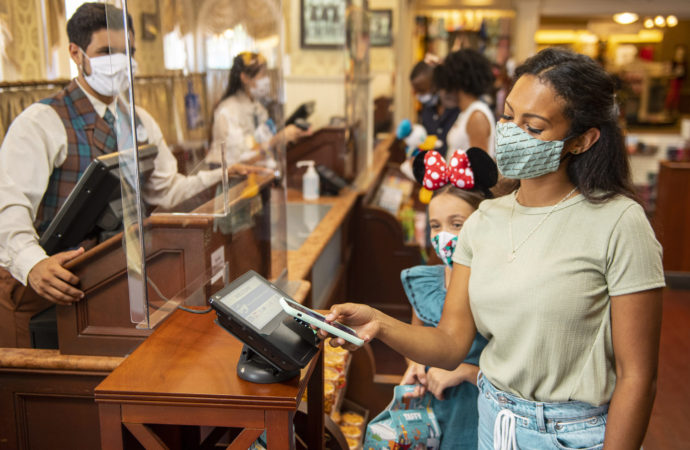A new study from the University of Central Florida Mechanical and Aerospace Engineering Center for Advanced Turbomachinery & Energy Research and submitted to the International Association of Amusement Parks and Attractions (IAAPA) states that theme parks can reduce the physical distancing from six feet to three feet.
According to the report, “The objective of the present study is to document the propagation distance of the droplets/aerosols issued from human respiratory events (speech and cough) using face coverings.”
The study analyzed the number of droplets/aerosols from 1-6ft in cases where a host, who coughed and spoke, wore no face covering, a cotton cloth face covering, and a three-layer disposable face covering.
It appears, from the study, that the experiments were conducted indoors. It concluded that coughing individuals without any face-covering persists a maximum of 4.5ft. Speech droplets/aerosols were detectable at a maximum of 4.1ft. Coughing generated 1.25 times more aerosol/droplets than speech, however, they both generated similar content with a face covering. A cloth face-covering reduced the maximum detectable distance of expelled aerosols/droplet to 2.22ft and a three-layer disposable face-covering reduced to 0.5ft. The Z-test verified with statistical significance that physical distancing can be reduced to 1.97ft with a cloth covering and to 0.51ft with a 3-layer covering.
The study concluded that “3ft physical distancing with face coverings is more effective at reducing aerosol/droplet exposure than 6ft without covering. This is relevant to physical distancing practice during the COVID-19 pandemic.”
Based on this conclusion, theme parks could reduce physical distancing by half. However, in another study by MIT professors, Martin Bazant and John Bush, both MIT professors say differently.
In their study, they state that the 6-foot rule did little to prevent the spread of COVID-19 indoors. One researcher even went further to say whether someone was 6-feet or 60-feet the risk of exposure from an infected person was the same.
What did make a difference was how many people were in an enclosed space, whether they wore masks or not, what they were doing, and the effectiveness of the ventilation system. They even said opening windows or installing ceiling fans in an enclosed space could be just as effective as a filtration system.
“The distancing isn’t helping you that much, and it’s also giving you a false sense of security because you’re as safe at 6 feet as you are at 60 feet if you’re indoors. Everyone in that space is at roughly the same risk, actually,” Bazant told CNBC.
Depending on the space, the level of exposure for people could be high or low even if someone is more than 6 feet away.
In a room that was relatively calm, the virus droplets would slowly drift to the ground, however in an active space (where people were talking, singing, eating, drinking, etc) the droplets would stay in the air longer and mix throughout the room longer. Ventilation or filtration helped remove the particles quicker out of the space.
The CNBC story said, “People seem to be more exposed to that ‘background’ air than they are by droplets from a distance, like secondhand smoke, according to the study.”
As far as wearing a mask outdoors, even though the professors did not study outdoor transmission they said, “Exhaled air is obviously much warmer than the background and tends to rise. That’s, by the way, the main reason that distancing outside makes almost no sense, and especially with masks, it’s even kind of crazy because you’re really not going to transmit to someone at 6 feet.
“If you look at the airflow outside, the infected air would be essentially swept away and very unlikely to cause transmission. There are very few recorded instances of outdoor transmission,” said Bazant. It is always possible to contract COVID-19 outdoors, especially if the area is crowded. “Crowded spaces outdoor could be an issue, but if people are keeping a reasonable distance of like 3 feet outside, I feel pretty comfortable with that even without masks frankly.”
The professors went on to say to CNBC, “Our study indicates that the six-foot rule is insufficient to limit indoor airborne transmission of COVID-19: one must also limit the time spent in an indoor space. Our study demonstrates how this time limit depends on the relevant factors, including room ventilation and filtration and face-mask use,” they said, noting that “face masks can be an extremely effective indoor safety measure.”
Various news outlets are reporting that the Biden Administration will be issuing updated guidance on Tuesday, 27 April, from the Centers for Disease Control and Prevention (CDC) regarding outdoor mask usage. CNN is reporting that although the language of the announcement is unknown, it is expected President Biden will announce new CDC guidance on whether vaccinated people need to wear masks outdoors and what unvaccinated people can also do.







